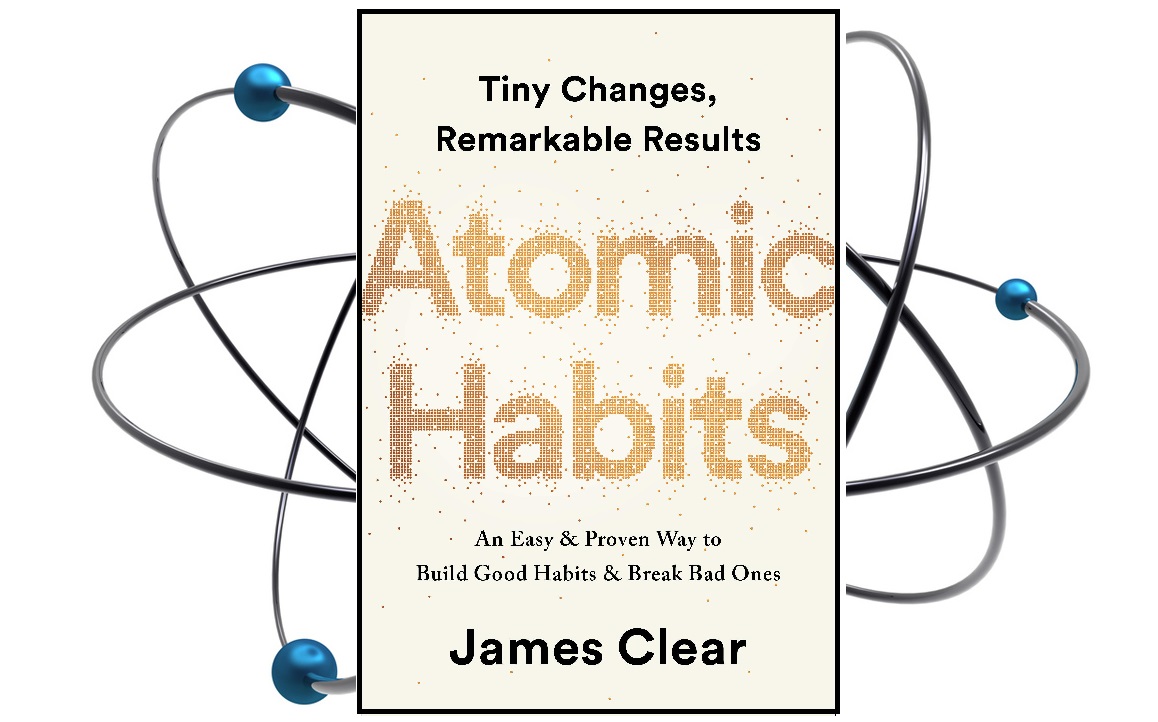
Highly successful people often have underlying habits that got them where they are – this book shows how you can too. What makes them appear superhuman is often just the result of relentless consistency which happened before they were in the limelight. The overnight success stories belie years of uninterrupted practice of their craft.
This book uses a foundation outlined in Charles Duhigg’s “The Power of Habit” of cue – craving – response – reward. It builds on that by suggesting many ways in which you can enforce good habits and discourage bad ones through simple methods and practices.
Book twenty is…
Atomic Habits by James Clear
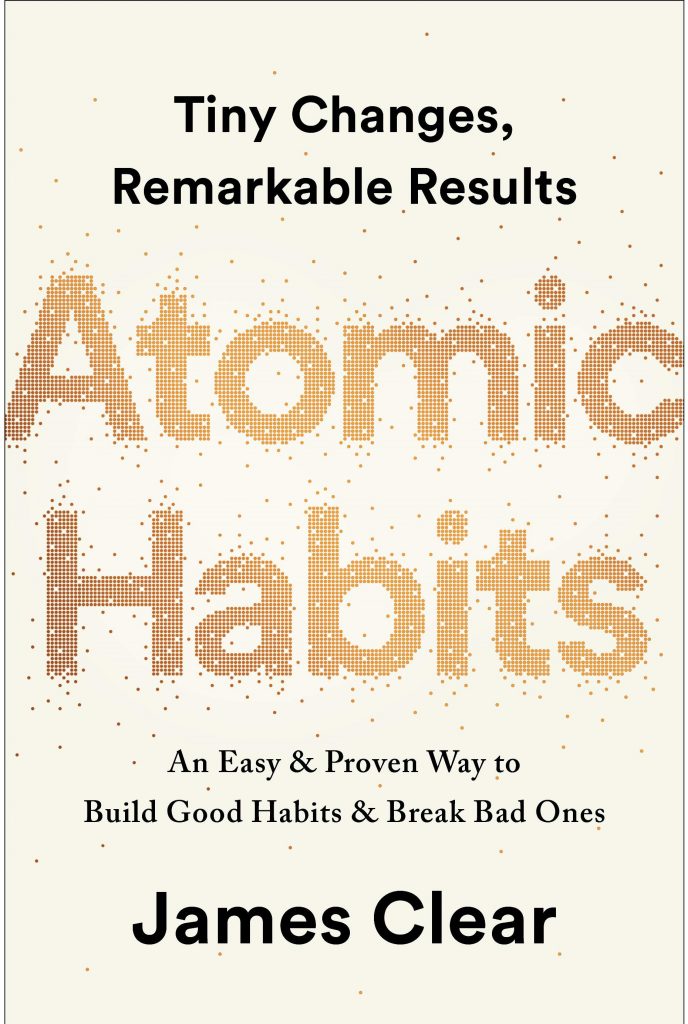
PRO TIP: Take notes! When you read a book, use a blank sheet of paper as a bookmark. Write down any interesting facts and information from the book. This condenses a whole book into 3-4 pages of key notes that are important and relevant to you.
My Notes
- “Your outcomes are a lagging measure of your habits” – most people expect immediate results but the truth is it takes time and patience.
- The compound effect of minute improvements can be seen by using a power of 365 on the numbers 1.01 (representing a 1% improvement each day) and 0.99 (a 1% decline in performance each day)
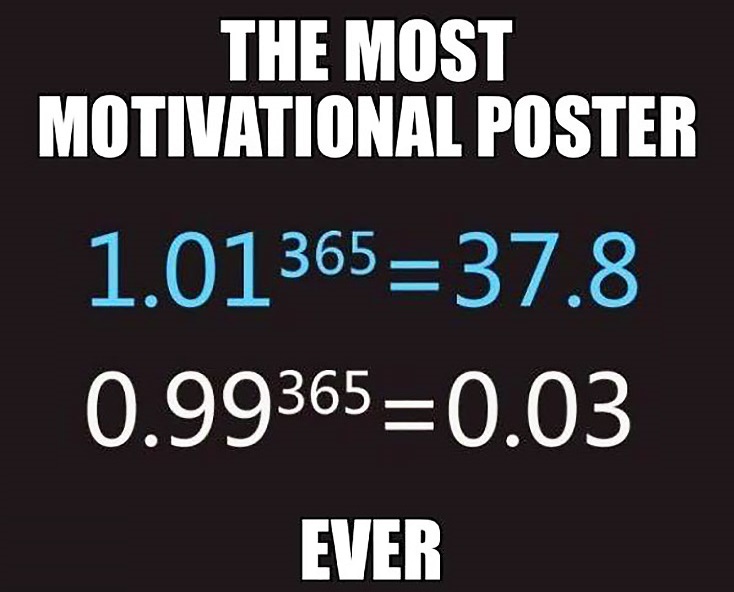
- The Plateau of Latent Potential is the threshold where the results of your habits start exceeding expectations.
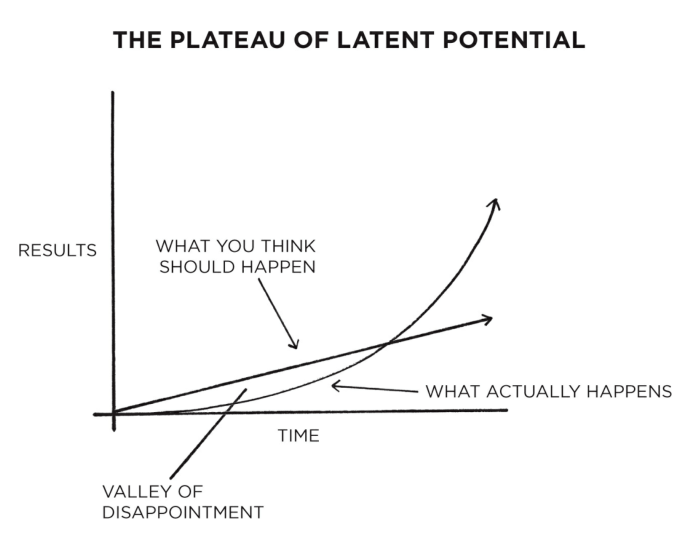
- “Focus on systems not goals“. This has also been referred to as focusing on the process not the outcome. An example would be setting the goal “eat 3 healthy meals a day” instead of “lose 10 lbs”.
- Make a habit your identity, take pride in it. Say “I am a runner”, not “I am lazy but going for a run”, or “I’m a non-smoker” instead of “I’m a smoker trying to quit”. It’s a simple rephrasing but very effective.
- Every time you repeat a habit you reinforce that identity, good or bad.
- Think of the goal you want, then the characteristic of someone who could achieve that goal, and take on those traits. e.g. “what traits does an employee have who will be offered promotion?“
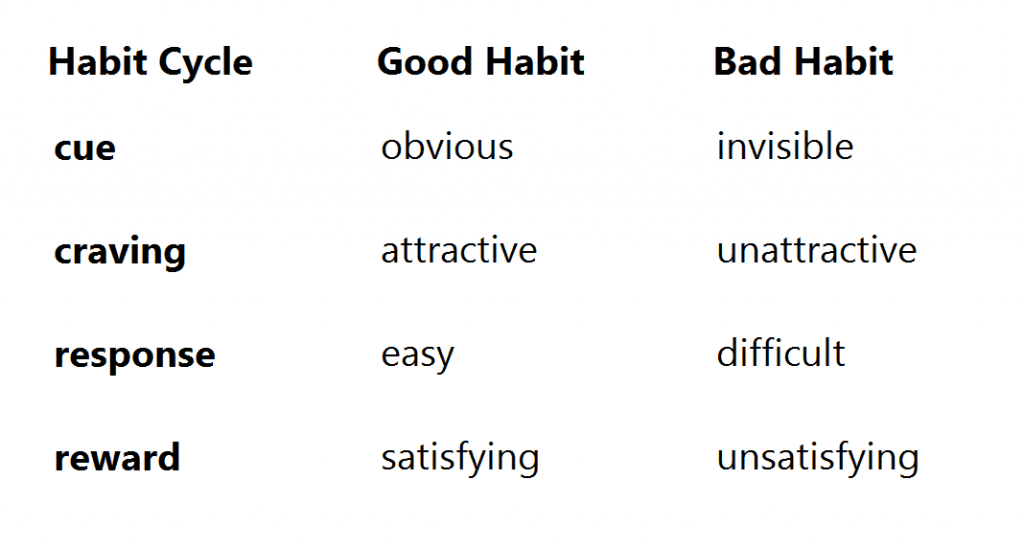
- The theme for most of the book is to change your environment to make good habits more likely to happen and bad habits less likely
- An example of making a response easier is Netflix or Amazon Prime Video using the “auto-play next episode” feature so that it takes more effort not to keep watching. In this case they are reinforcing a bad habit of yours for their gain.
- Habit Stacking is taking an existing habit and making it the cue for a new one e.g. doing squats after brushing your teeth or meditating after hitting your morning alarm.
- Disciplined people structure their environment to minimise the need for willpower, thus appearing superhuman.
- Q: How long does it take to form a habit? A: When forming a new habit it is not the number of days since you started it that determines success, it’s the frequency of the action
- Hyperbolic discounting is a cognitive bias where people over-value immediate benefits compared to long term costs. An example would be eating a doughnut with no regard for their future health.
- We now live in a delayed return environment compared to the immediate return of our ancestors. We are not evolved for our actions to have such delayed consequences such as saving for retirement, so we often choose immediate gratification.
- Habit tracking allows you to visualise your progress and is a good motivator. Research has shown that tracking progress on a goal like losing weight or quitting smoking increases success rate.
- Goodhart’s Law: when a measure becomes a target it ceases to be a good measure. An example would be obsessing too much about tracking your weight loss on a scale, meaning you are more likely to use crash diets to keep the numbers going down.

- We over-value numbers as a measure of progress because they are quantifiable, when qualitative measures like pictures of your body each week during weight loss may be more beneficial.
- The Goldilocks Rule: Humans experience peak motivation when working on tasks “just right” for their current abilities. Don’t make the task too easy or too hard, as neither provide an optimal stimulus.
- A negative aspect of creating a habit is the behaviour becomes automatic and the reduced awareness can lead to a dip in performance. To overcome it, constantly review your progress.

